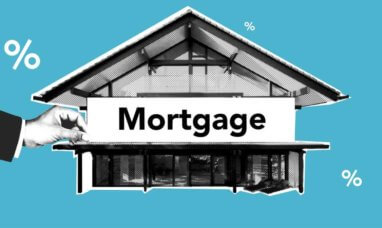Refinancing your mortgage might be considered for several reasons. Perhaps you’re interested in tapping into part of your home’s equity, or you’d want to consolidate some other debt. Mortgage refinancing is an option, but the closing expenses turn many individuals off. A simple refinancing may help you pay less each month on your mortgage. However, are you truly ahead if you include it in the closing fees? Finding banks or other lenders online willing to refinance mortgages is an excellent place to start.
Mortgages with “No-Closing-Cost Refinance” options are now available from several banks and credit unions. Seems appealing, doesn’t it? As with everything, there are benefits and downsides; nonetheless, you may refinance your mortgage without paying any closing fees. Of course, there is always a catch; in this case, your monthly mortgage payments will have to be more significant. You may start by looking for no-closing-cost mortgage lenders in your area using an internet search if you’re still interested.
What Is a Refinancing With No Closing Costs?
This is not an intentionally misleading inquiry. Simply put, a no-closing-cost mortgage refinancing is one in which the borrower does not have to front any money to cover the closing fees. Nonetheless, this does not imply that expenses do not exist. Mortgage companies won’t automatically fork over the cash to cover these costs on your behalf. Instead, the fees are either added to the mortgage’s principal or traded for a slightly higher interest rate.
Remortgaging your home for $250,000 is only one example. The typical closing fees for such a sale would be between $2,500 and $6,000, according to the lending institution’s criteria. You may wind up with a mortgage for $275,000 instead of having to come up with a flat payment of $250,000 to cover all of the upfront fees. All of the fees associated with the closure are included.
The Typical Closing Expenses of a Mortgage Refinancing
You likely paid sizable closing expenses when you purchased your home. Regrettably, many of the initial expenses of a mortgage remain the same after refinancing. Closing expenses for a mortgage refinancing typically range from two percent to six percent of the loan’s principal sum. A new home must be appraised and maybe inspected by a construction inspector before you can get financing. That stuff is on you, too.
Closing expenses can include any legal fees incurred by the buyer or seller. Then there’s the:
-
- Origination fees typically range from 0.5% to 1% of the total loan amount.
- Legal expenses related to the title fees.
- Costs associated with VA funding.
- Unless you’re putting down at least 20% of the purchase price in cash, your lender will likely insist that you pay for mortgage insurance.
Even if you have to pay for a credit report, the costs might be small. Credit reports are required for lenders to verify your credibility. Yes, you will need to demonstrate your worthiness for a new mortgage, even if you already have one.
Additional Fees Related to a No-Closing-Cost Refinance
The outcome is the same whether you pay a higher interest rate or have your closing expenses added to the principal. Paying the closing expenses throughout your mortgage will increase your monthly payment. Take a look at both of these situations.
The Mortgage Rate Has Increased
Let’s maintain the previous mortgage amount of $250,000. If you pay the closing fees in cash, the interest rate drops to 2.9%. Your new monthly payment will be $1,997.79 (not including escrow for taxes and insurance on the mortgage). You may avoid paying these fees entirely by choosing a higher interest rate on a mortgage with no closing costs.
That amounts to an immediate savings of around $5,000. However, the new rate is 3.75 percent. With this increase, your new monthly payment will be $2,101.39. Indeed, the additional monthly cost is a mere $100. However, the term of your mortgage is 15 years or 180 months. One hundred dollars more would have paid for the mortgage and closing expenses in only fifty installments.
Rising Loan Balance
To avoid paying them out of pocket, you may also choose to include your closing expenses in the final loan amount. However, remember that you will pay more for this long term. Let’s take another look at our running example.
If you finance $250,000 at 2.9% for 15 years, your monthly payment will be $1,997.79. In the end, after 15 years, you will have spent $359,602.20. Imagine that you are offered the same rate and payment conditions, but you must also pay $5,000 in closing charges. Increase to $2,032.08 per month in payments. The total cost of the loan after 15 years is $365,774.40. Instead of spending $5,000, you’ll have to pay more like $6,100 on closing fees.
How Do You Know If It’s a Good Time to Get a No Closing Cost Mortgage Refinance?
There is no way to make no-closing-costs mortgage refinancing more affordable in the long term. Then why do people even bother with these mortgage options? Well, there are a few cases in which one would be warranted.
You generally won’t be able to repay the up-front costs of refinancing via the cost savings on your next relocation if you expect to live in the home for less than five years. A no-closing-cost refinancing may be your only choice if you qualify for a mortgage but don’t have the money for closing charges.
Some more circumstances should be taken into account. Taking out a loan against the equity in your house may be your only viable choice if you find yourself in a dire financial situation and need immediate access to cash. Assuming funds are limited (this is an emergency, after all), you likely do not have the money necessary to cover the closing fees. A no-closing-cost refinancing may help you get out of a jam, but it will cost you more.
Finally, if the interest rate on your initial mortgage was excessive, you may want to look into refinancing. Say you got your first mortgage 5–10 years ago but had to settle for a higher interest rate because of a less-than-perfect credit score. Because of your improved financial situation, you may now negotiate a much more favorable interest rate. Perhaps 2.9% rather than 4.9%. Even if you want to add the closing fees to the principal, the interest savings you will accrue throughout the loan will more than make up for them.
Concluding Remarks
Even though there may be more costs in the long run, there are times when refinancing with no closing costs is the best option. It is contingent upon the home’s market value, the outstanding mortgage debt, the borrower’s credit, and personal financial position. However, as a general rule, it is preferable to pay the closing charges when the transaction is signed rather than afterward.
Some homeowners may struggle to qualify for a mortgage refinancing because they lack the roughly $5,000 in cash needed to close the deal. Call around to your local banks and mortgage lenders if you’ve been putting off refinancing your mortgage due to concerns about closing expenses. Although not every lender provides them, some may be willing to refinance your loan without charging you any closing charges.
Featured Image: Freepiks @ kues1






